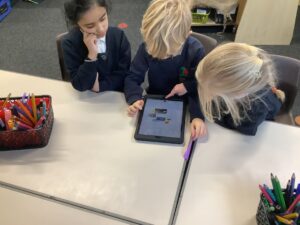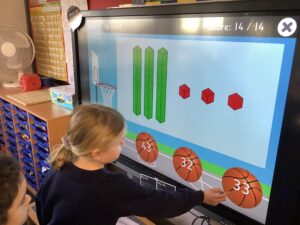Maths: multiplication
This week in Year 2 we have been exploring multiplication. We are able to recognise equal groups, count how many objects are in each group and how many groups there are. We then use this knowledge to find the total.
We started by writing our equations out using repeated addition. We then wrote the equation as a multiplication.
(E.g. – 2 + 2 + 2 + 2 is the same as 2 x 4)
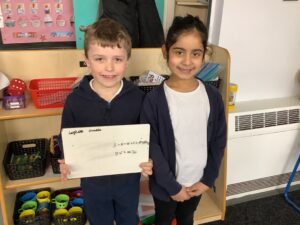

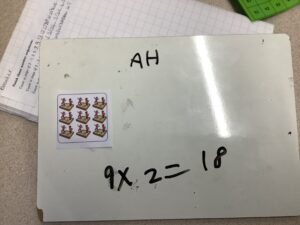
Help at home by arranging equal groups in the home for your child. You could use socks, coins or any other object that can be counted in 2s, 5s or 10s!
Top tip for watching YouTube with your child: go to the settings cog (it’s along the play bar) and turn off autoplay – this
avoids an inappropriate clip coming up automatically, and helps to discourage your child from passively watching clip
after clip.
Science – materials
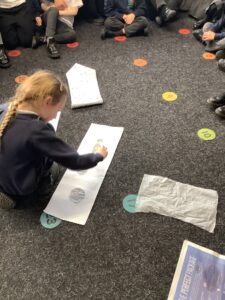

In this weeks science, we have been completing comparative tests. We have been discussing diiferent materials and their properties. We then made predictions to decide if they would be absorbent or not.
We poured the same amount of water on each piece of material to test our predictions.
One of the materials (wrapping paper) we tested on both sides due to one side being shiny and the other dull.
Help at home by identifying different materials and discussing their properties.
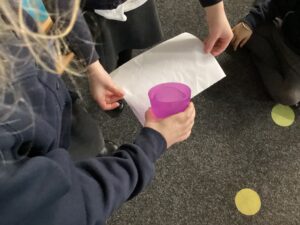
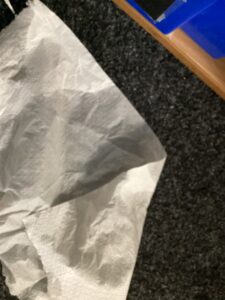
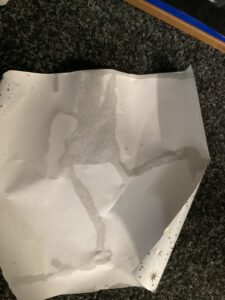
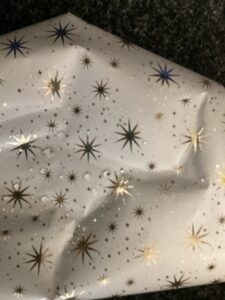
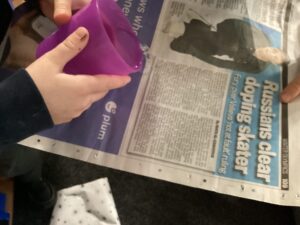
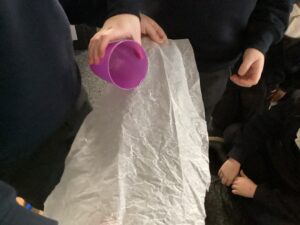
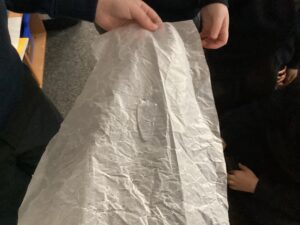
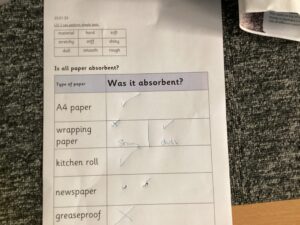
Reception Coffee Morning – 31.01.23
Reception Coffee Morning – Tuesday 31st January, 2023
After dropping your child off, stay at school for an informal chat with Mrs Beesley, the Reception staff and get to know the other parents, too. We will be in the new area of school called ” The Hub” from 9- 10am. Come and join us.
3,4B: we are geographers!
This half-term, we’ve been geographers. Specifically, we’ve been learning about volcanoes. We’ve studied plate tectonics and learnt how volcanoes are formed. We’ve investigated where they are and thought about whether volcanoes are a good or bad thing – the answer isn’t as obvious as it seems.
In particular, we’ve studied two volcanic eruptions in detail: Eyjafjallajökull in 2010 (which you might remember) and Mt Vesuvius in 79AD (which you probably don’t remember – although I’m regularly told how old parents are).
We learnt about the negative aspects of volcanic eruptions: the disruption to travel, the destroying of infrastructure and the loss of life. And, we learnt about the positive aspects of volcanoes: geothermal energy, rich soil for farming and tourism.
Help at home by…
- asking your child about their learning
- researching volcanoes at home
- looking for articles or books about volcanoes
- using Google Earth to look at some volcanoes
A little challenge, can your child…
- tell you some information about the eruption of Eyjafjallajökull in 2010
- tell you some information about the eruption of Vesuvius in 79AD
- explain some of the positive and negative aspects of volcanoes
- tell you where some volcanoes are
A little extra challenge..
- Can your child tell you more about the word volcano and what it means (a clue: it’s Latin!)
3,4 A Class News
It’s been another busy week at Scholes!
In Writing, we wrote up our recounts about a volcanic eruption and the children used some fantastic vocabulary, including some lovely fronted adverbials.
In Maths, we’ve been working on multiplication. Year 4 have been using column multiplication to multiply 3 digit numbers and Year 3 have been partitioning to multiply 2 digit ones, moving onto using the formal method in Week 4.
In Reading, we’ve continued to work on a variety of different skills, including retrieval, inference and choice. It was also great to see some fantastic reading record activities in Book Club on Wednesday.
In Topic, we’ve been learning about how volcanoes are formed and the impact they can have, both positive and negative.
That’s not to mention some really thoughtful contributions in Living and Learning (please see the previous class news post for more detail, the picture below shows everyone working away on their posters), some great ball skills in P.E and some super work on classifying rocks in Science!
Well done 3,4 A on another successful week. I also wanted to say a big well done to all the children who learnt and recited the poem sent home earlier in the term – Catch a Little Rhyme. There were so many who gave it a go!
Please help at home by reading regularly with your child, helping them to practise their spellings and ensuring they continue to practise their times tables on Times Tables Rockstars (in particular, x8 for Year 3 and x9 for Year 4). Thank you for all that you do, your support makes a big difference.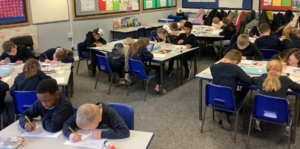
Living and Learning – Being Safe
Our theme in Living and Learning for Weeks 3 and 4 of term is being safe.
In Week 3, we thought about what makes a happy and healthy home. Our objective was to recognise features of a healthy family life and to know when and how to ask for help. We wrote some of these ideas down to create posters.
The children made some great contributions about what things make for a happy home, including having the things you need, feeling comfortable and having someone to care for you.
Help at home by talking more about these themes with your child, encouraging them to share their feelings and emotions and discussing safety at home.
In Week 4, we’ll be talking about the NSPCC and their Speak Out. Stay Safe. programme.
Maths – fun online games
We use a website called Top Marks in maths. There are lots of fun games that help children use the maths they are learning at school. In 1,2B this week we have played Place Value Basketball.
Help at home by going on Numbots for maths facts or Top Marks for other maths games.
Exploring Nursery and making friends
Yellow group are settling well into Nursery routines and have been busily exploring both independently and with their friends. You’ll see lots of engaged, happy faces in these photos!
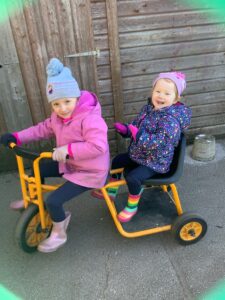
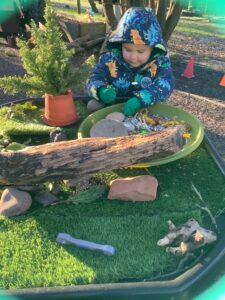
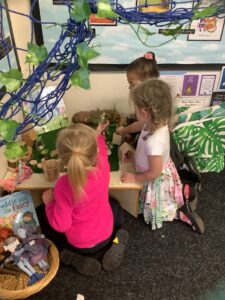
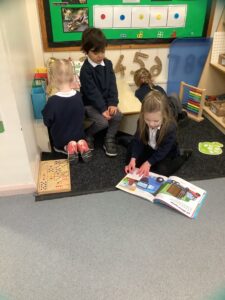
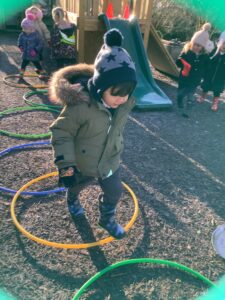
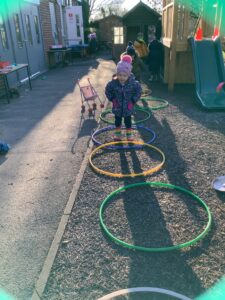

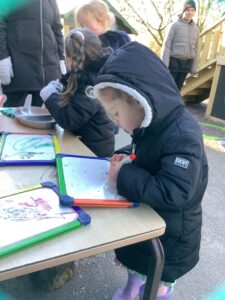
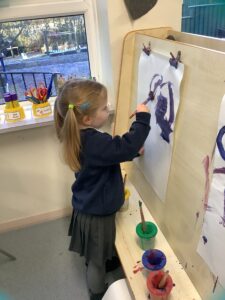
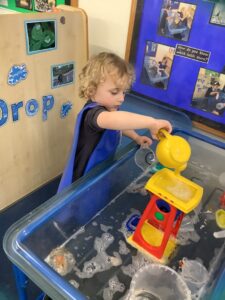
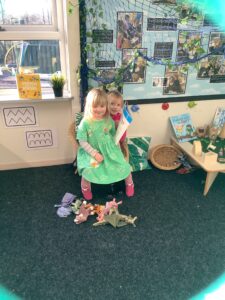

We don’t always catch everyone on camera to share each week, but we try to post a photo of everyone over the term. Remember to check each week to see what we’ve been learning and for ways to continue this at home.
The Magic Paintbrush
The Magic Paintbrush
This week, we have focused on the story The Magic Paintbrush. We began by listening to the story for enjoyment. After becoming familiar with the story, we were then able to discuss the main events and characters.
The children then explored what they would do if they had a magic paintbrush.

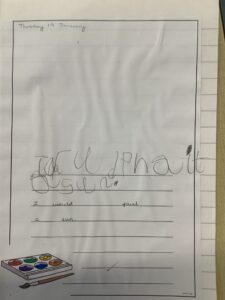
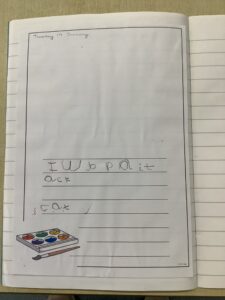
Top tip for watching YouTube with your child: go to the settings cog (it’s along the play bar) and turn off auto play – this avoids an inappropriate clip coming up automatically, and helps to discourage your child from passively watching clip after clip.
Maths
This week, we have consolidated our understanding of the composition of 5. We used the nursery rhyme 5 little speckled frogs to investigate different ways of making 5. By using part whole models and 10 frames, the children were able to represent their understanding in a range of ways.
Use the sentence 5 is made of __ and ___ to describe these images.
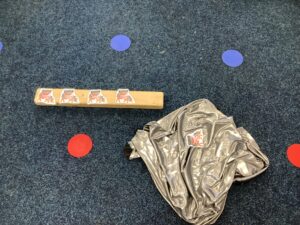

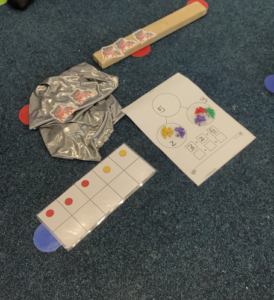
Phonics
This week, the children have learnt some new digraphs and trigraphs – a digraph/trigraph consists of ‘two/three letters that make one sound’. Ask your child to tell you the sounds the digraphs/trigraphs below make.
ur ow oi ear
Before reading a word we always look for any digraphs/trigraphs (two/three letters that make one sound). Then, we say the sound the digraph makes. Finally, we sound out the word and blend it together – using our phoneme (the sound a letter makes) fingers! This helps your child identify the digraphs/trigraphs (two/three letters that make one sound) before reading a word.
Find the diagraphs/trigraphs before reading these words.
hurt how coin fear
Poetry Picnic
Each week, we will be learning a new poem. We will recite this poem each day. By saying the poem out loud we can focus on the sounds and rhythm of each word or line. This week’s poem is ‘Jack and Jill’.
PE
This week, reception has continued to develop their balancing skills in a Foot Tech session and on the equipment.


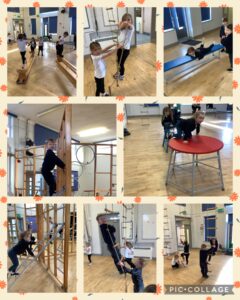
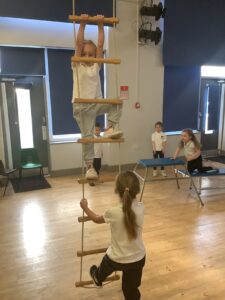
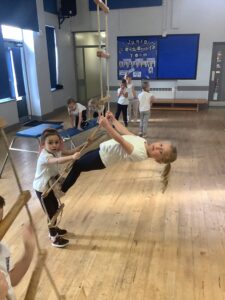

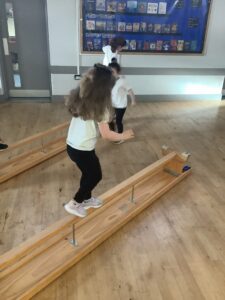
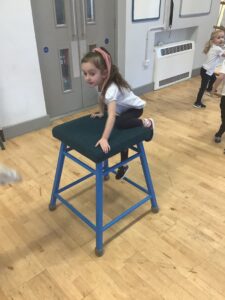
Stay and Play – Funky Phonics
Thank you to all the adults that were able to join our stay and play sessions this week.
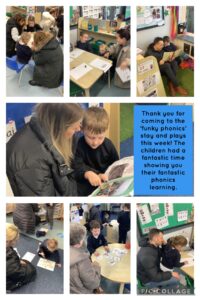
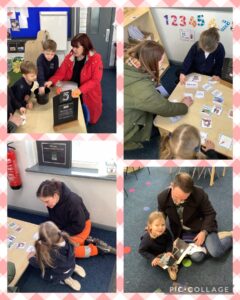
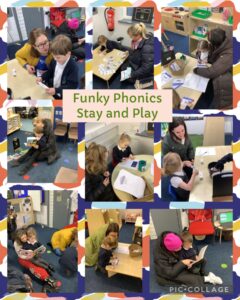
Learning in our areas
This week, we have explored Lunar New year. The children were able to compare the celebration to their own experiences.
I’ve seen fireworks before. We had them on New Years Eve.
I saw them (fireworks) on bonfire night.
I had new clothes on Christmas day.

Reminders
Swimming/Football
Spring 1 – swimming
Rainbow Class- 4 Jan, 18 Jan, 1 Feb
Sunshine Class- 11 Jan, 25 Jan, 8 Feb
When your child is not swimming, they will be taking part in Foot Tech Football sessions. Please ensure your child comes in PE kit every Wednesday, including suitable trainers.
Reading
Reading Records – return to school each Friday
Library books – return on Thursdays
Geography and reading
This week, we have been using our geography and reading skills to edit a Jamboard of our local environment- school. We have been matching photographs from our local environment with the correct captions.

